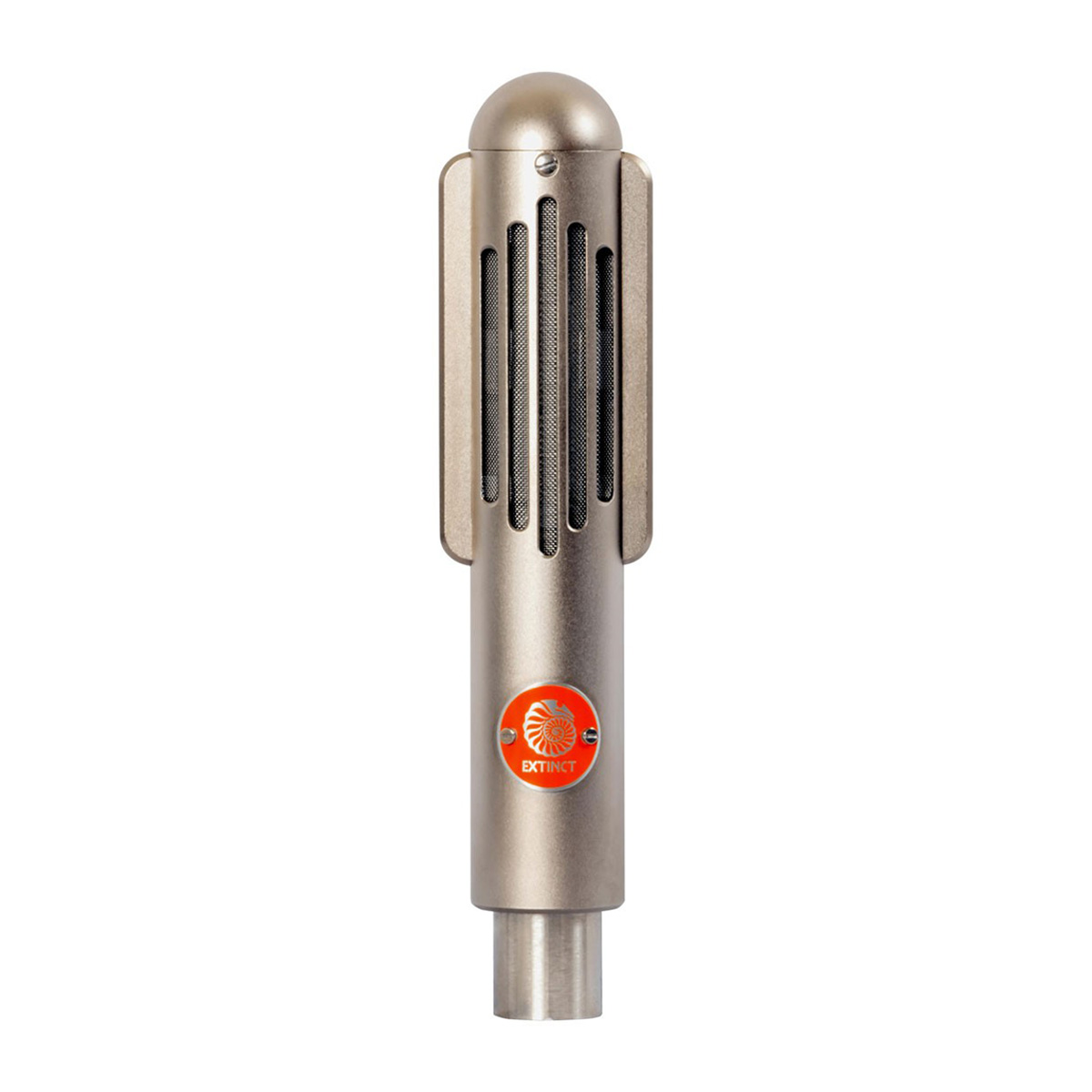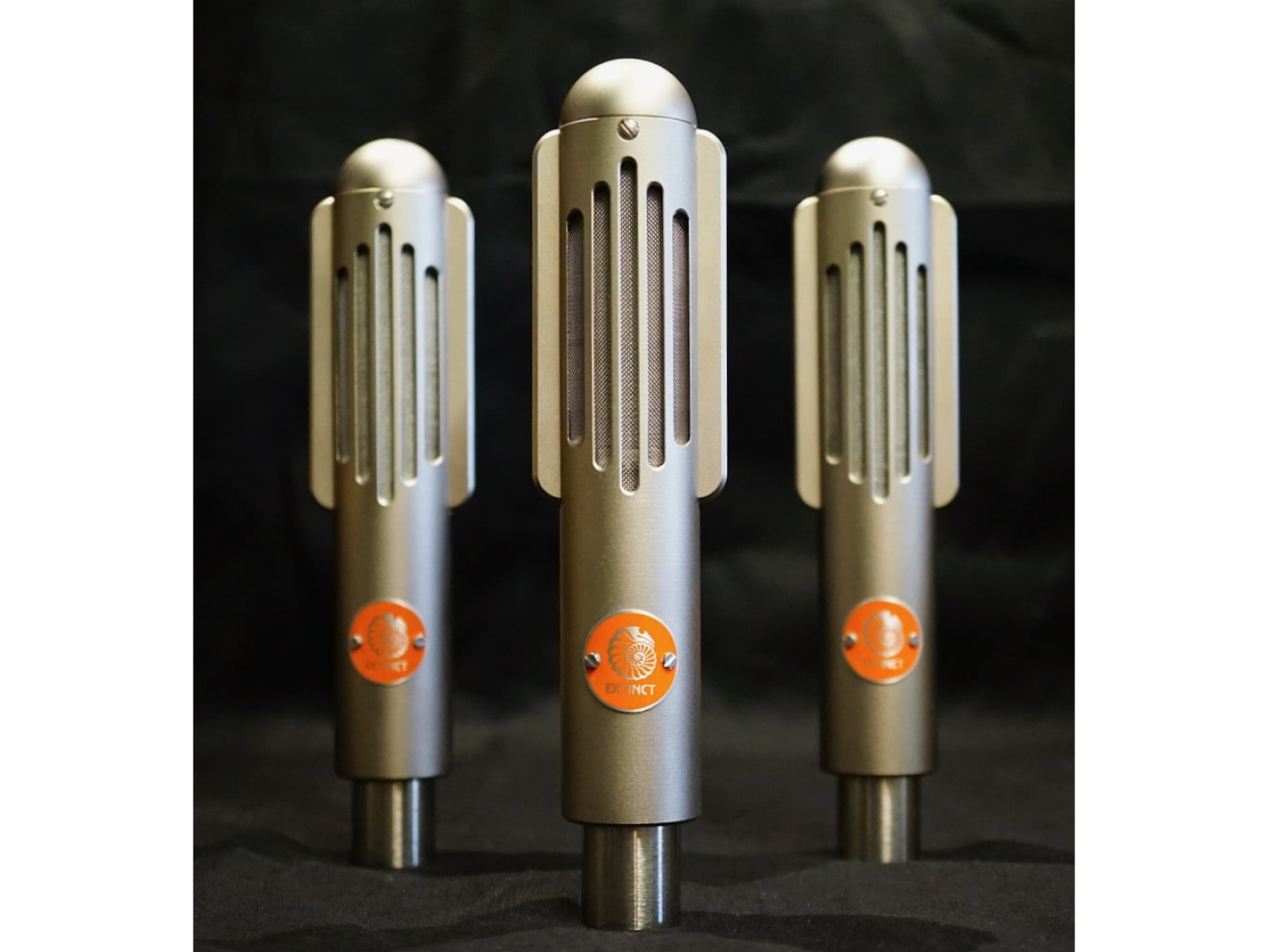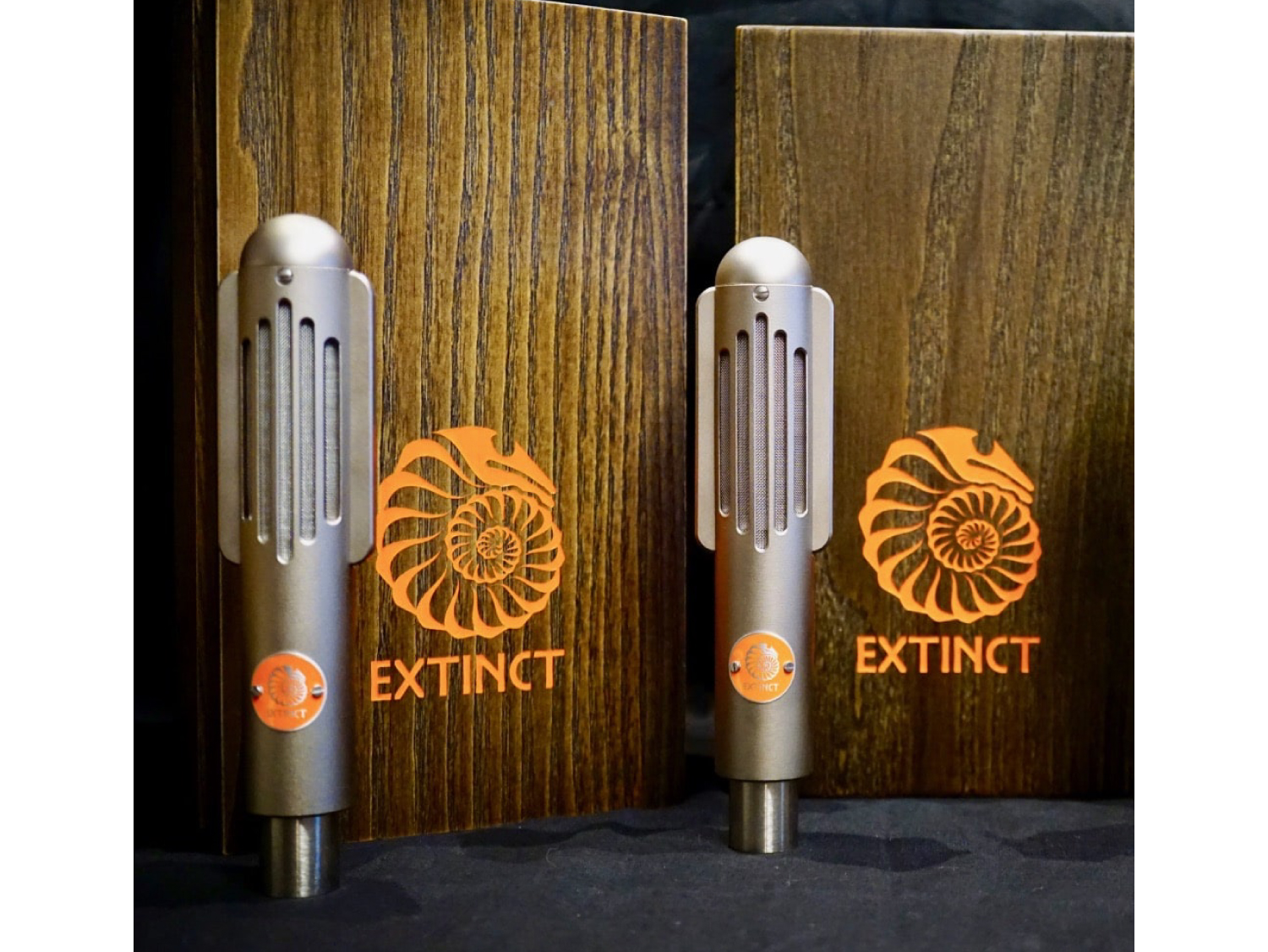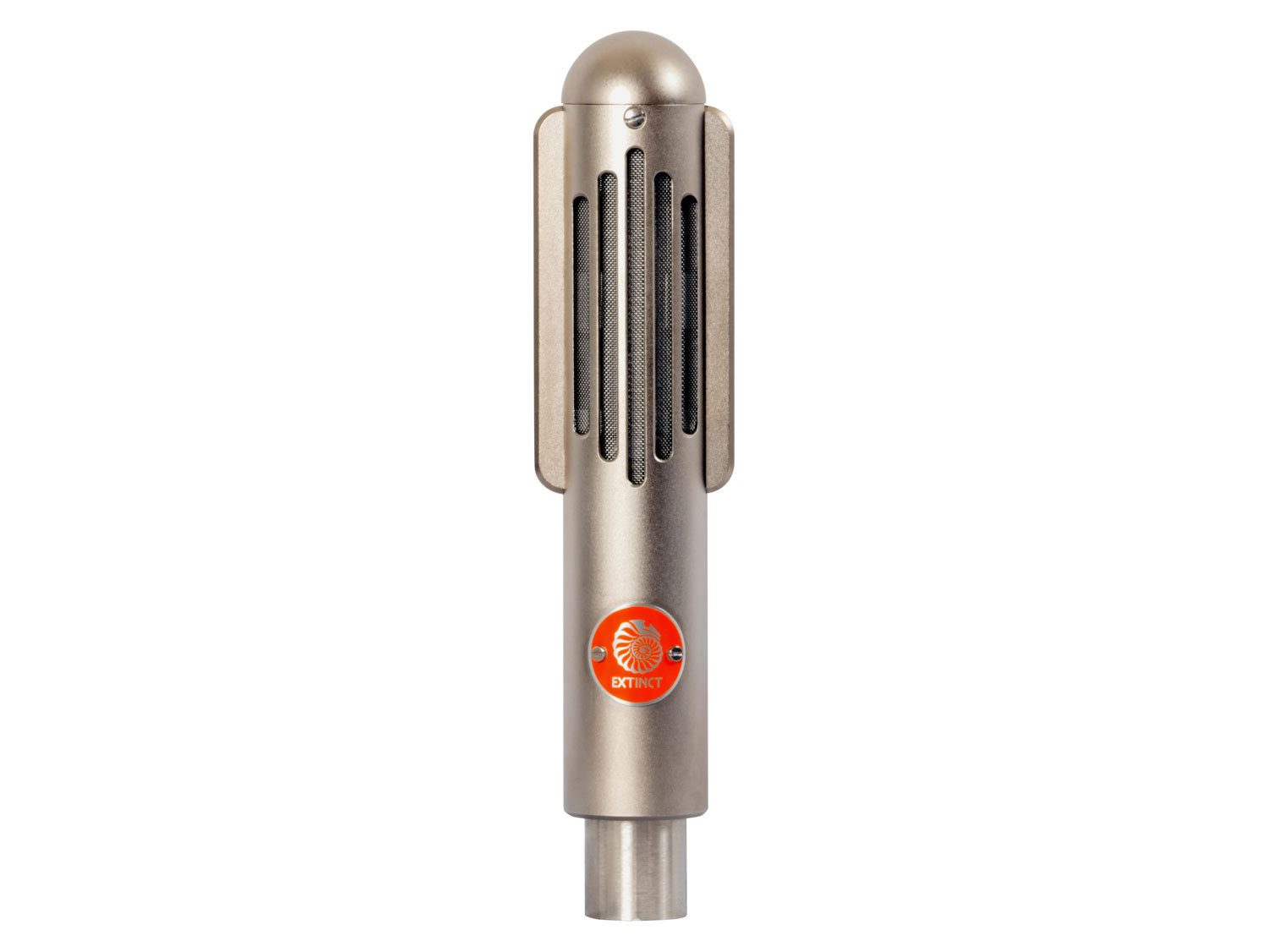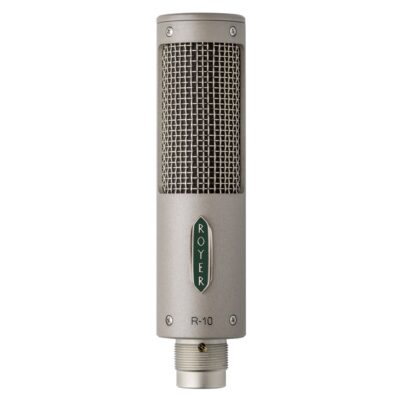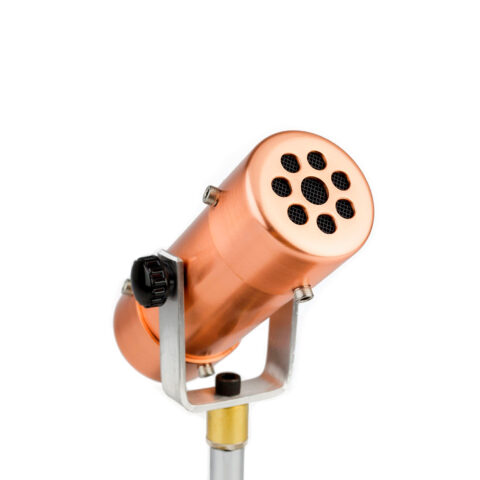Extinct Audio BM9 (The Viking) Studio Ribbon Microphone
The BM9 is a versatile low noise ribbon microphone, with strong output, rich bass and clear, detailed top end. It is equally at home in front of a guitar amp or an orchestra. The BM9 brings you the best combination of vintage tone and modern utility.
Quality control is paramount with ribbon microphones, which is why every ribbon is made, fitted and tuned by Dr. Stewart Tavener, who has worked on thousands of vintage and new microphones. The BM9 is made in the UK*. All the metal parts are machined and plated in England, and the transformers are wound and the mics assembled at our facility in York.
The BM9 is supplied with a solid wood box and hardtail mount.
Mechanical parts carry a lifetime warranty to the original owner. Ribbons are warrantied for 1 year from date of purchase, but with care should last many years.
BM9 Features
The BM9 from Extinct Audio is a general purpose bi-directional ribbon microphone, with a symmetric figure-8 pickup pattern. It is designed to be equally at home in front of a guitar amp, above an orchestra, and everywhere in between. It has a deep, rich bottom end particularly when used close to the source, and has a large bass proximity effect. At the top, the response is smooth and detailed, as one expect to would find in a high end vintage ribbon microphone.
Aesthetically, the BM9 is inspired by classic Danish microphones from the 1950s and 60s, but contains numerous technical innovations which bring its performance, noise floor and output level ‘bang’ up to date.
Deep-field magnets
The Viking utilises a wide, long ribbon in a strong magnetic field to give a strong output with low noise floor. The deep-field magnets ensure linear performance as the ribbon moves from front to rear. Vertical grill slots of different size reduce diffraction and improve rejection from the sides of the microphone. All this adds up to a deep, rich tone with an amazing degree of clarity from a ribbon microphone.
The Sonic Temple
Every Extinct Audio ribbon is sonically tempered for durability and extended life. This involves subjecting the microphone to audio frequency vibrations, which harden and strengthen the aluminium ribbon. The custom-wound permalloy core transformers are designed and made at our workshop to ensure high efficiency and low noise over the full sonic range.
Built in Yorkshire
All the mechanical parts are machined in the UK, and the microphones are assembled here in our workshop in York. Each ribbon is hand-fitted and tuned by Stewart, who has over a decade of experience repairing and building thousands of ribbon microphones.
Built for the future
Good quality studio microphones have very long lives and may be in use for several decades if cared for and serviced occasionally. We have seen ribbon microphones come in for service that were made in 1927, and sincerely hope that our microphones will outlive their owners!
We use recyclable or sustainable materials where possible. 99% of the microphone is made of metals ‚Äì brass, steel and aluminium, all of which can be recycled. Plastic parts make up just¬†1% of the microphone’s weight. The microphone boxes are made from sustainable ash wood..
We re-use cardboard boxes and other packing materials where possible for shipping the microphones.
Extinct Audio users include…
James Ford, Simian Mobile Disco, James Knight, Knight Time Studios Justin Lockey (Editors/Minor Victories/Mastersystem); Nigel Pepper, engineer, Snow Patrol, UK; Jason Lytle (Grandaddy); Ray Lamontagne; Nils Frahm, Germany; Matthias Hahn, Berlin; J.J. Hastry, ICP Studios, Brussels; Konk Studios, London; Real World Studios, Bath; Neil Innes, ATA records, Leeds; George Apsion, Kore Studios, London; Johannes Buff, End Note Studios, France; Douglas September, Canada; REP Music, Cambridge; Barley McKay, Valley Wood Studio, Leeds; 80 Hertz Studios, Salford, UK; Iwan Jenkins, The Riot Point, Canada; Ali Chant, Playpen / Toybox, Bristol; Martin Mitchell, Instant Music, UK; Dave Tilley, Bogue Sound Studios, NC; Jeff Ardron, St Austral Sound, UK; Sal Richichi, Las Vegas; Nicolas Masset, Belgium; Don Gunn, The Office, USA; Maxwell Hallett, London; Scott Evans, Antisleep Studios; Gwyn Ap Harri, Doncaster; Ben Barker, The Haggis Horns, Leeds, UK; Andrew Wilson, Red Six / Wounded Buffalo; Richard Horner, Black Snowflake Sound, Sapporo, Japan; Tim Rutten, Maastricht, Netherlands, Joe Clayton, No Studio, Manchester.; Misha Bittleston; Benjamin Lee, Eugene, OR, USA; Nils Grondahl, Denmark; Louis San Antonio; Shawn Murphy, Los Angeles; Air Studios, UK; Dale Smith, Queensland, Australia; Jules Burns; Brendan Aanes; Daniel Inzani, UK; Douglas Doherty, DACS Audio; Pete Ord, Sunbeams Music Centre, Cumbria; Paul Kappa, Amazing Kappa Band; Dave Mallen, Innovation Station Music, Virginia; Robert Charles Wilks, Squarehead Studios, Kent, UK; Jérôme Cousin, L’Atelier du Microphone, Saint Thual, France; Jonny Hooker, Young Thugs Studios, York; Russell Pay, London; Joe Montague, UK; Marco Noble, Noble Sound Studios, Linsengericht, Germany; David Stych, UK; Hessischer Rundfunk, Germany. Rob van den Berg, Sonokinetic, Netherlands;
Specifications
- Output impedance = 300 ohms at 1KHz
- Directional Pattern: True figure-8.
- Transducer Element: 1.8 micrometer aluminum ribbon
- Frequency range*: <30 Hz – 15 kHz @ ±3dB. (excludes proximity effect)
- Maximum SPL: 135dB @ 20 Hz
- Sensitivity: 3.5 mV/Pa, -49 dBv/Pa (referenced to AEA R84)
- Self noise (thermal): -130 dBV at 20ºC (20 kHz bandwidth)
- Signal to noise (1kHz at 1 Pa): 81 dB.
- Proximity effect: Strong
- Electronics: Passive. No power required
- Output configuration: Transformer balanced
- Output Connector: XLR3, Pin 2= +ve, Pin 3 = -ve, Pin 1 = Ground
- Weight: 355g (microphone only)
